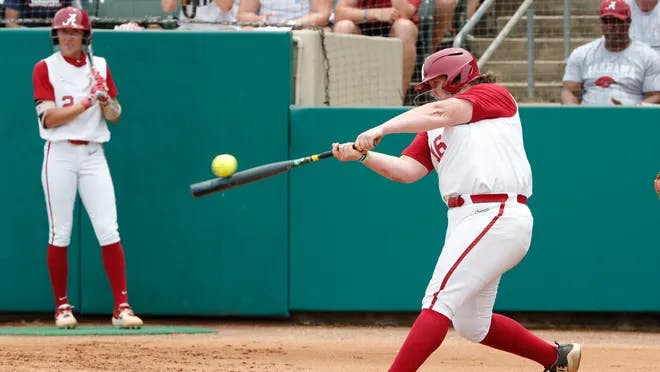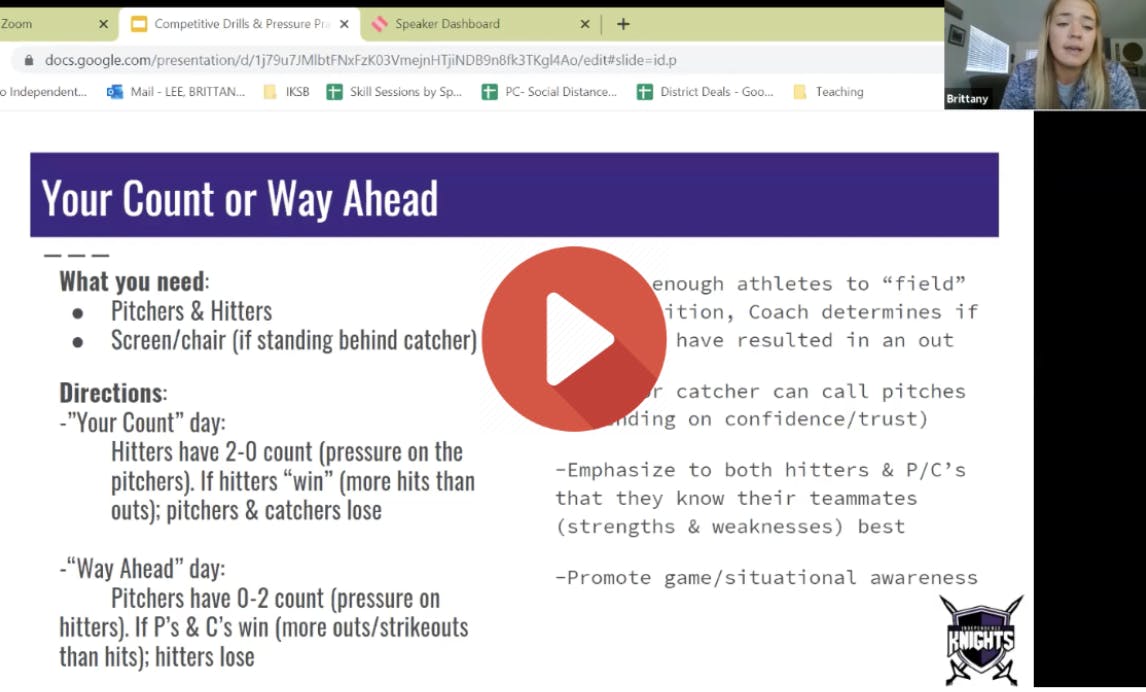Featured courses
- How to Become a Softball Pitcher by Brandon Ogle
- How to Perfect Pitch-Calling For Your Softball Team by Grant Young
- How to Maximize Your Softball Pitcher's Abilities by Grant Young
- How to Create a Softball Team’s Offensive Mindset by Grant Young
- Three Competition-Based Hitting Drills For Your Softball Team by Grant Young
- Three Great Drills For Softball Infielders by Grant Young
- How to Find and Develop Elite Softball Pitchers by Grant Young
- How to Create Runs on the Softball Basepaths by Grant Young
- 5 Biggest Mistakes Softball Coaches Make by Brandon Ogle
- 3 Softball Drills To Do At Home by Brandon Ogle

Three Competition-Based Hitting Drills For Your Softball Team
- By Grant Young
Finding ways to simulate a competitive environment during a softball practice can be a tricky matter.
All coaches know that hitters (and any other athlete) perform better under pressure if they’re used to doing so. And giving players this experience is a great way to boost their confidence when game day arrives and they find themselves squaring off against the opposing team’s top pitcher.
But with daily practices being such a low-stakes, low-intensity endeavor, coaches often need to get creative if they’re to get their hitters to engage and prepare to compete once their at-bats begin to matter.
While this can be a daunting task for coaches, considering how hectic their schedules and practice routines surely already are, letting a softball coaching legend like Brittany Scarafiotti lay out the blueprint for making practice drills competitive is the perfect solution.
Coach Scarafiotti (who used to go by Coach Lee) has been a head softball coach at various high schools in Texas since 2018. In 2023, Coach Scarafiotti’s Keller ISD high school softball team was 6A Regional Quarterfinalists and produced the first Playoff wins in school history. Prior to the beginning of her successful coaching career, Coach Scarafiotti was a former DI collegiate softball student-athlete for Stephen F. Austin State University, graduating with a bachelor’s degree in 2014.
Coach Scarafiotti knows that running competitive hitting drills helps build her players’ confidence at the plate, and has been a major catalyst for their success. And this has not only helped her high school teams win games, but getting her players used to competing at practice has given those who’ve ascended to the collegiate level a leg up on their peers, as well. Her ‘Competitive Drills and Pressure Practice’ course will provide you with all the info you need to turn your practices into a space for cultivating competitive excellence.
Target Practice
One unconventional method that Coach Scarafiotti utilizes with her high school softball hitters is hitting Fungos often.
“Any time an athlete can hit Fungo, I’m a big component of it,” Coach Scarafiotti said. “It’s teaching them to see where they toss the ball, good barrel control, still working good hitting mechanics. It’s just on a smaller scale.”
One fungo-based drill that Coach Scarafiotti utilizes is what she calls the target practice drill. It starts with a player who’s holding a Fungo and three softballs standing along the first base line a few feet away from home plate while the fielder is standing near third base.
The player with the Fungo will then hit a ground ball to the fielder, who will attempt to field it cleanly and throw it back to a net that the hitter is standing in front of. That process will then repeat with the rest of the softballs before the two players switch places.
This target drill can become competitive if there are multiple different teams (i.e., partners) taking part in the drill. In this case, the entire thing can be timed, and the team that gets the quickest time while fielding every ball and hitting every fungo cleanly is the winner.
Another important part of making practice drills competitive and engaging is having a reward for the team that wins. Often it can be the team that wins gets to skip conditioning or doesn’t have to shag balls at the end of practice, but coaches can get creative with whatever reward best suits them.
Beat the Runner
Another one of Coach Scarafiotti’s favorite drills with her team is what she calls the “Beat the Runner” drill.
For this drill, you will need to have players at every single position in the field and another team ready to hit. From there, you’ll have one hitter on a tee at home plate hit the ball. Regardless of where they hit it or whether it’s fielded, that player is going to run around all the bases.
The fielders will field the ball; and if it’s hit in the infield they’ll throw it to first base, home, third base, second base, first base, and home in hopes of doing so before the runner reaches home. And if the ball is hit in the outfield then the initial throw will go to home, then third base, second base, first base, then back to home.
In other words, the goal is to throw the ball around the horn before the hitter gets back to home plate.
Ideally, you’ll have enough players to field two full teams and bat around the lineup, then tally which team has the most points (the fielding team gets a point if they get it around the horn in time, hitting team gets a point if they make it to home).
But if you don’t have enough players then come up with some other creative way to tally and determine a winner and loser.
Your Count or Way Ahead

A third drill that Coach Scarafiotti uses to simulate high-pressure situations is the ‘Your Count or Way Ahead’ drill.
This is a practice with live at-bats between pitchers and hitters. When it’s a ‘Your Count’ day, that means every at-bat begins as if the count is 2-0. Therefore, pitchers need to throw a strike and batters are looking for something to hit.
And if it’s a ‘Way Ahead’ day, that means every at-bat begins as if the count is 0-2. That means the hitters must stay alive while the pitchers are trying to get a strikeout.
The point of both versions of this drill is that either the pitcher or hitter will be confronted with what’s likely a losing situation. This will get them more comfortable when facing these situations in the actual game.

